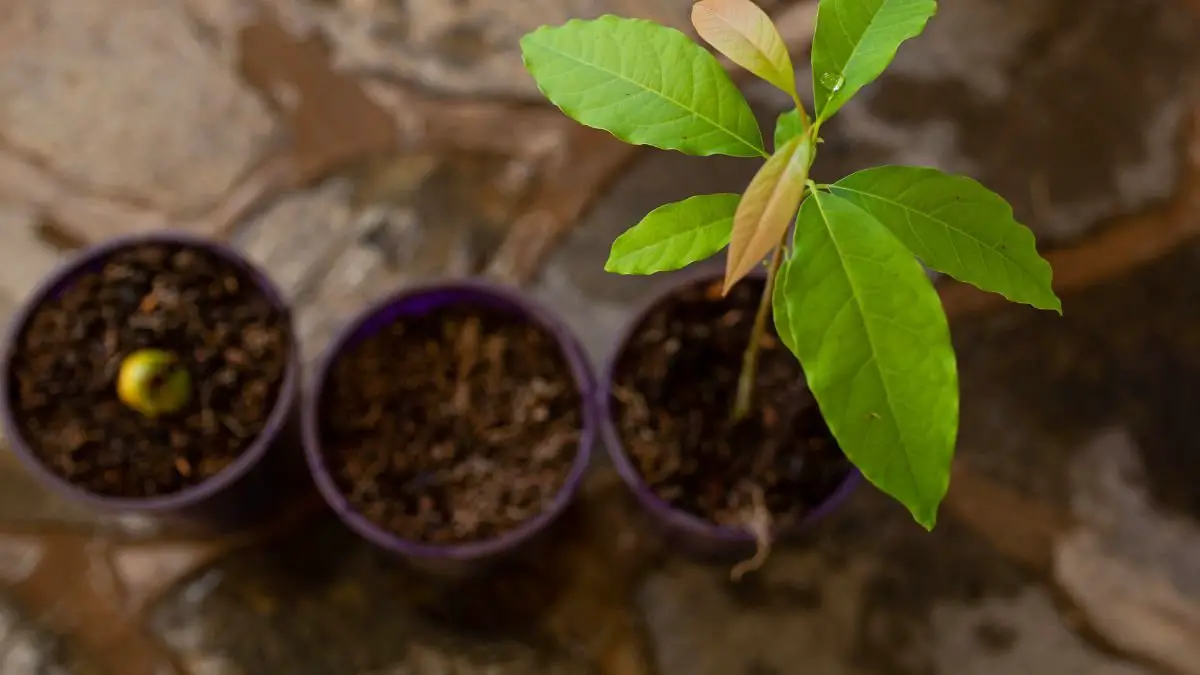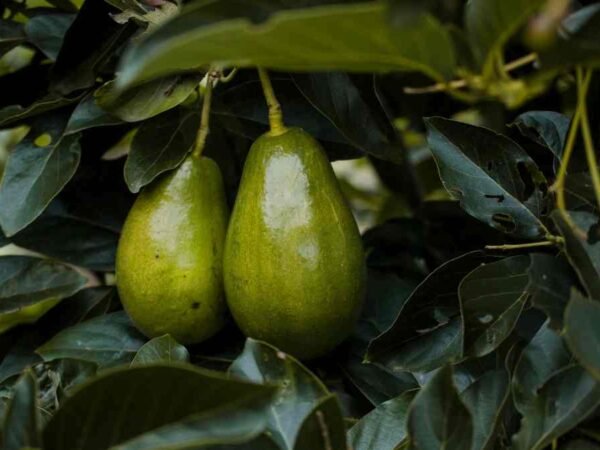
Curious about growing avocados in a pot? Wonder no more! With the right care and conditions, you can cultivate these creamy delights right in your own home by planting avocado cuttings. Avocado trees have a rich history dating back to ancient Aztec times, prized for their delicious fruit and lush foliage.
Ready to embark on your avocado-growing journey? Whether you're a seasoned gardener or just starting, growing avocados in pots can be a rewarding experience that brings a touch of greenery and freshness to your living space.
Choosing the Right Avocado Variety
Indoor Growth Options
When growing avocados indoors, choose a sunny spot by a window to provide ample light for the plant. Supplement natural light with grow lights if needed. Monitor humidity levels regularly to maintain a healthy environment for your avocado plant.
Starting Your Avocado Tree
From Seed
To begin growing your avocado tree from a seed, suspend the avocado seed over water with toothpicks. Regularly change the water to prevent mold growth. Once roots and a stem sprout, transfer the seed to a pot.
Buying a Sapling
When purchasing an avocado sapling with healthy roots, opt for reputable nurseries or garden centers. Select a sapling with vibrant green leaves and a sturdy stem. Ensure the root system is well-developed and not root-bound.
Potting Your Avocado Plant
Selecting the Pot
When potting your avocado plant indoors, make sure to choose a large container with proper drainage holes. This is crucial to prevent waterlogging, which can harm the plant. Opt for a lightweight pot if you plan to move the avocado plant frequently, especially outdoors. The pot should be at least 24 inches in diameter to allow ample space for the avocado tree's growth.
Soil and Drainage
For potting mixes, use well-draining potting soil mixed with perlite or sand to promote healthy root development. It's essential to regularly check the soil moisture levels to prevent waterlogged conditions that may lead to root rot. To enrich the soil and provide essential nutrients, consider adding organic matter such as compost.
Positioning and Light Requirements
Indoor Lighting
For indoor avocado plants, ensure they get 6-8 hours of sunlight daily. Rotate the pot frequently to promote balanced growth with uniform light exposure. Supplement natural light with grow lights if your space lacks sufficient sunlight.
Outdoor Placement
Position outdoor avocado containers in sunny spots with protection from harsh afternoon sun. Utilize a wheeled plant caddy for easy movement to adjust sunlight exposure. Avoid placing pots near structures that may block sunlight or restrict root growth.
Watering Your Avocado Tree
Frequency
To ensure healthy growth, water your avocado plant deeply but infrequently to avoid waterlogging issues. Monitor the soil moisture regularly and adjust the watering frequency according to the plant's requirements. For accurate measurement, consider using a moisture meter to determine the ideal watering schedule.
- Water deeply but infrequently
- Monitor soil moisture regularly
- Consider using a moisture meter for accuracy
Signs of Over or Underwatering
Yellowing leaves indicate overwatering in your avocado plant, while wilting or drooping leaves are signs of underwatering. By observing these indicators, you can adjust your watering routine to maintain the optimal soil moisture levels necessary for your plant's health.
- Yellowing leaves signal overwatering
- Wilting or drooping leaves suggest underwatering
- Adjust watering schedule accordingly
Fertilizing for Healthy Growth
Type of Fertilizer
When nourishing your avocado plant, select a balanced fertilizer tailored for fruit-bearing plants. Opt for slow-release options to ensure a steady nutrient supply. Avoid high-nitrogen fertilizers as they can prioritize leaf growth over fruit production.
Fertilizing Schedule
To promote healthy growth, fertilize your avocado plant every 6-8 weeks throughout the active growing season. Follow the manufacturer's guidelines for proper dilution and application methods. During the dormant winter months, consider reducing or halting fertilization to support natural cycles.
Pruning and Maintenance
When to Prune
Prune avocado plants after flowering to maintain shape and size, avoiding heavy pruning during growth. Remove dead branches promptly.
Pruning Techniques
Use sharp shears for precise cuts, trimming overgrown branches to encourage new growth and air circulation. Selectively prune crowded branches for better light penetration.
Pest Control Strategies
Common Pests
Avocado plants are vulnerable to pests such as spider mites, aphids, and scale insects. These tiny creatures can wreak havoc on your plant by sucking nutrients from the leaves. Regularly check the leaves for signs of damage like stippling or sticky residue left behind by these pests. To combat infestations, consider using natural predators like ladybugs or neem oil, which are effective in controlling pest populations without harming the plant.
Natural Remedies
When dealing with pesky pests like spider mites, a simple mixture of mild soap and water can effectively wash them off your avocado plant's leaves. For a more potent solution, neem oil acts as a natural insecticide that deters common pests while being gentle on the plant. Introducing beneficial insects such as ladybugs or lacewings into your garden can help maintain a healthy balance by preying on harmful pests organically.
Harvesting Your Avocados
Signs of Ripeness
When checking for ripeness, gently squeeze the avocado to feel a slight give, indicating it's ready. Observe the skin color turning darker as the avocado ripens. Peel off the stem cap to reveal the color underneath, signaling readiness.
Picking and Storage
Harvest ripe avocados by gently twisting them off or cutting the stem close to the fruit. Allow unripe avocados to ripen naturally at room temperature. Prolong shelf life by refrigerating ripe avocados to slow down the ripening process.
Closing Thoughts
By following the steps outlined in this guide, you can successfully grow avocados in a pot. Selecting the right variety, planting and caring for your tree, ensuring proper light exposure, watering, fertilizing, pruning, and monitoring for pests are all essential parts of cultivating healthy avocado plants. Remember to enjoy the process and be patient as your tree grows and matures.
Now that you have the knowledge to grow your own avocados at home, why not start your avocado-growing journey today? Share your newfound expertise with friends and family who might also be interested in growing their own avocados. Happy planting!
Frequently Asked Questions
Can I grow avocados in a pot?
Yes, you can grow avocados in a pot as long as you choose a dwarf variety and provide proper care such as adequate sunlight, watering, and fertilization. Potting an avocado plant allows for control over soil quality and drainage.
How do I start growing an avocado tree?
To start growing an avocado tree, germinate the seed by suspending it in water until roots appear. Plant the seed in well-draining soil when roots are around 2 inches long. Place the pot in a sunny spot and keep the soil consistently moist but not waterlogged.
What are the key light requirements for avocado plants?
Avocado plants require plenty of sunlight to thrive. Ensure your plant receives at least 6-8 hours of direct sunlight daily. If growing indoors, place your avocado plant near a south-facing window to provide adequate light exposure for healthy growth.
When should I harvest my avocados?
Harvest avocados when they reach maturity on the tree but are still firm. To check for ripeness, gently squeeze the fruit; if it yields slightly to pressure, it is ready to be picked. Allow harvested avocados to ripen at room temperature before consuming.
How often should I fertilize my avocado tree?
Fertilize your avocado tree three times a year with a balanced fertilizer formulated for citrus and avocado trees. Apply fertilizer in early spring, early summer, and late summer following package instructions based on the size and age of your tree.
Image Source: Paid image from CANVA



